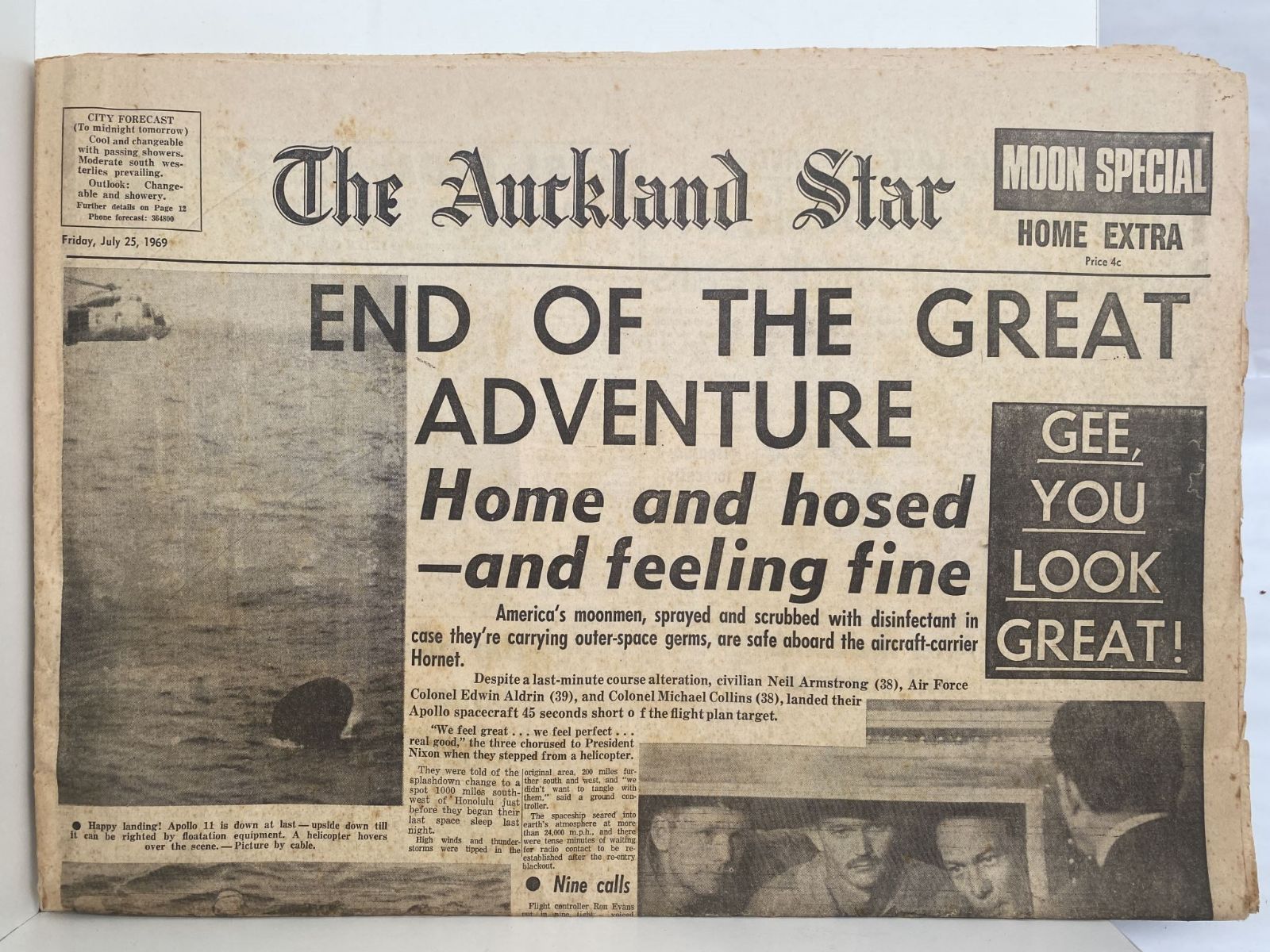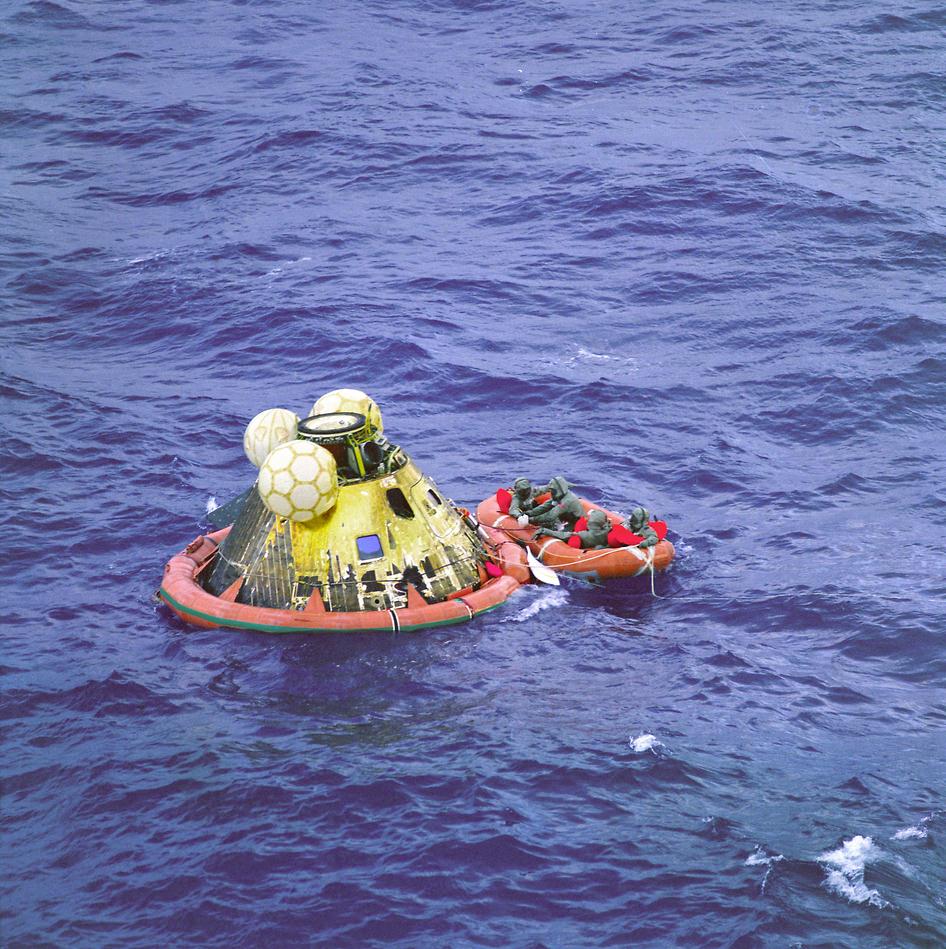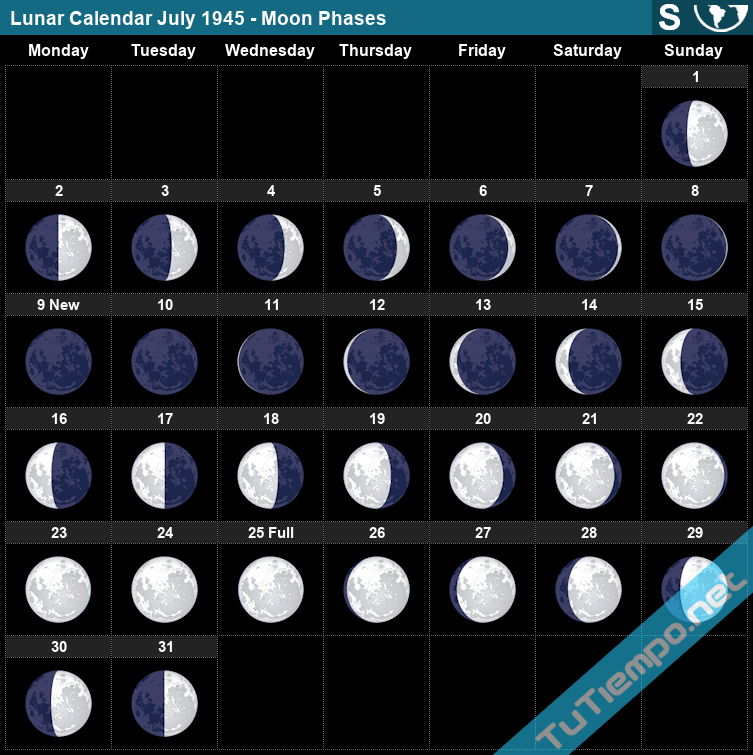Apollo 11 Comes Home
The Apollo 11 crew await pickup by a helicopter from the USS Hornet, prime recovery ship for the historic lunar landing mission. The fourth man in the life raft is a United States Navy underwater demolition team swimmer. All four men are wearing biological isolation garments. They splashed down at 12:49 a.m. EDT, July 24, 1969, about 812 nautical miles southwest of Hawaii and only 12 nautical miles from the USS Hornet. Credit: NASA
Story and gallery expanded[/caption]
The three man crew of NASA’s Apollo 11 splashed down in the Pacific Ocean 45 years ago today on July 24, 1969 – successfully concluding Earth’s first journey to land humans on another world and return them safely to our Home Planet.
Apollo 11 Commander Neil Armstrong became the first human to set foot on the Moon on July 20, 1969 after he stepped off the footpad of the Lunar Module Eagle soon after the start of the moonwalk EVA at 10:39 p.m. EDT and onto the lunar surface with his left foot at the Sea of Tranquility at 10:56 p.m. EDT. Lunar Module (LM) pilot Buzz Aldrin followed soon thereafter. They came in peace for all mankind!
The magnificent Lunar landing feat accomplished by US Apollo 11 astronauts Neil Armstrong and Buzz Aldrin marks the pinnacle of Mankind’s most momentous achievement.
The Apollo 11 crew consisting of Neil Armstrong, Buzz Aldrin and Command module pilot Michael Collins splashed down safely at 12:50 p.m. EDT on July 24 about 900 miles southwest of Hawaii in the North Pacific Ocean while seated inside the Command Module Columbia dangling at the end of a trio of massive parachutes that slowed their descent through the Earth’s atmosphere.
 President Nixon Greets the Returning Apollo 11 Astronauts. The Apollo 11 astronauts, left to right, Commander Neil A. Armstrong, Command Module Pilot Michael Collins and Lunar Module Pilot Edwin E. “Buzz” Aldrin Jr., inside the Mobile Quarantine Facility aboard the USS Hornet, listen to President Richard M. Nixon on July 24, 1969 as he welcomes them back to Earth and congratulates them on the successful mission. The astronauts had splashed down in the Pacific Ocean at 12:50 p.m. EDT about 900 miles southwest of Hawaii. Credit: NASA
President Nixon Greets the Returning Apollo 11 Astronauts. The Apollo 11 astronauts, left to right, Commander Neil A. Armstrong, Command Module Pilot Michael Collins and Lunar Module Pilot Edwin E. “Buzz” Aldrin Jr., inside the Mobile Quarantine Facility aboard the USS Hornet, listen to President Richard M. Nixon on July 24, 1969 as he welcomes them back to Earth and congratulates them on the successful mission. The astronauts had splashed down in the Pacific Ocean at 12:50 p.m. EDT about 900 miles southwest of Hawaii. Credit: NASA
After a mission duration of 8 days, 3 hours, 18 minutes, 35 seconds from launch to landing the Apollo 11 crew were plucked from the ocean by helicopters from the USS Hornet recovery ship after splashdown only 12 nautical miles (24 km) away.
They had to don protective biological isolation garments (BIGs) in case they were infected by some unknown and potentially hazardous “moon germs.” Of course there were no pathogens, but this was not definitely known at the time.
After their return to Earth, the trio was scrubbed with a disinfect solution of sodium hypochlorite and had to remain in quarantine for 21 days inside a 30 feet (9.1 m) long quarantine facility known as the Lunar Receiving Laboratory (LRL).
They were welcomed back to Earth by President Nixon aboard the USS Hornet.
We’ve chronicled the journey of Apollo 11 and lunar touchdown on July 20, 1969 as well as this week’s renaming of a historic human spaceflight facility at the Kennedy Space Center in honor of Mission Commander Neil Armstrong.
Armstrong passed away at age 82 on August 25, 2012 due to complications from heart bypass surgery. Read my prior tribute articles: here and here






